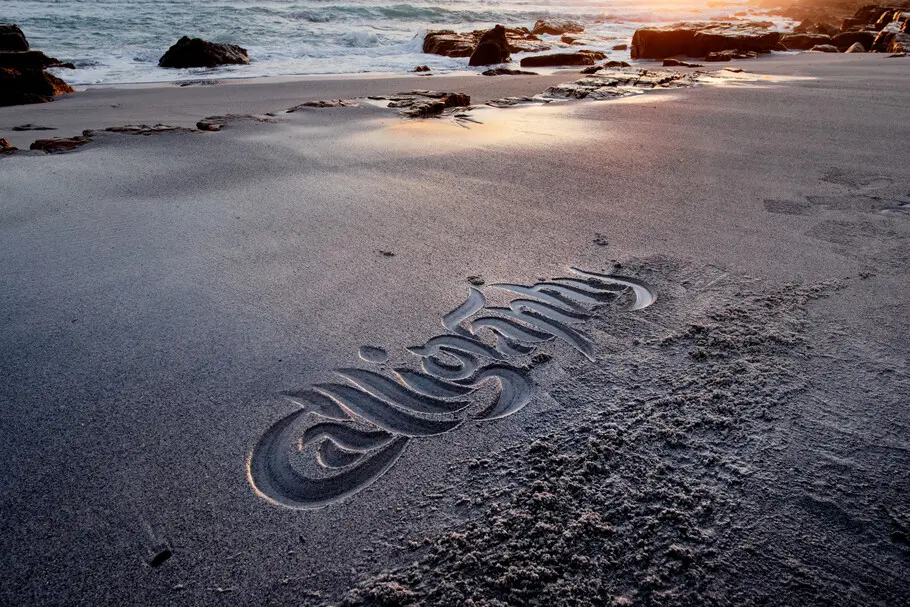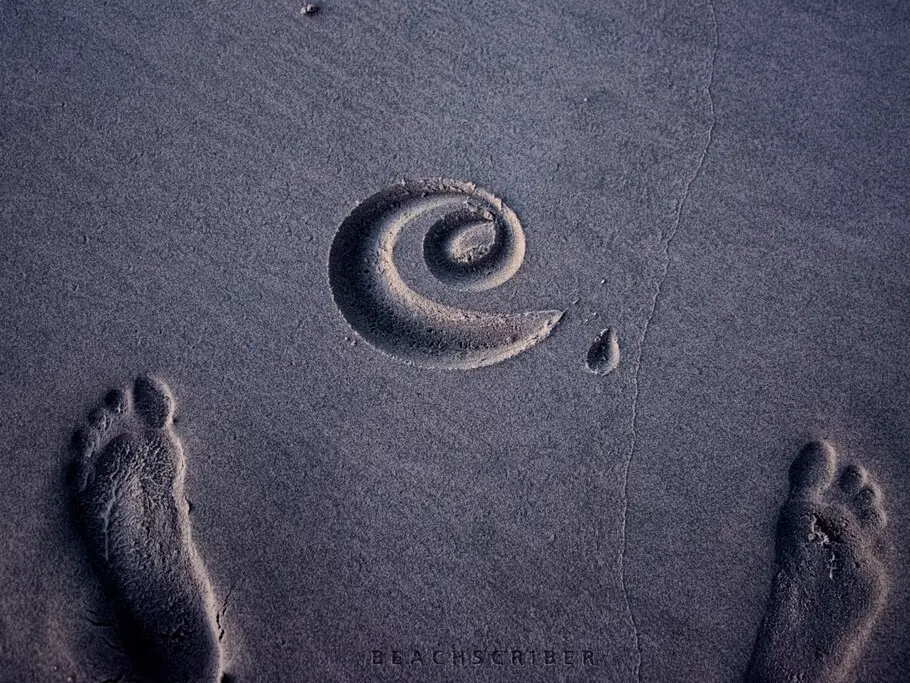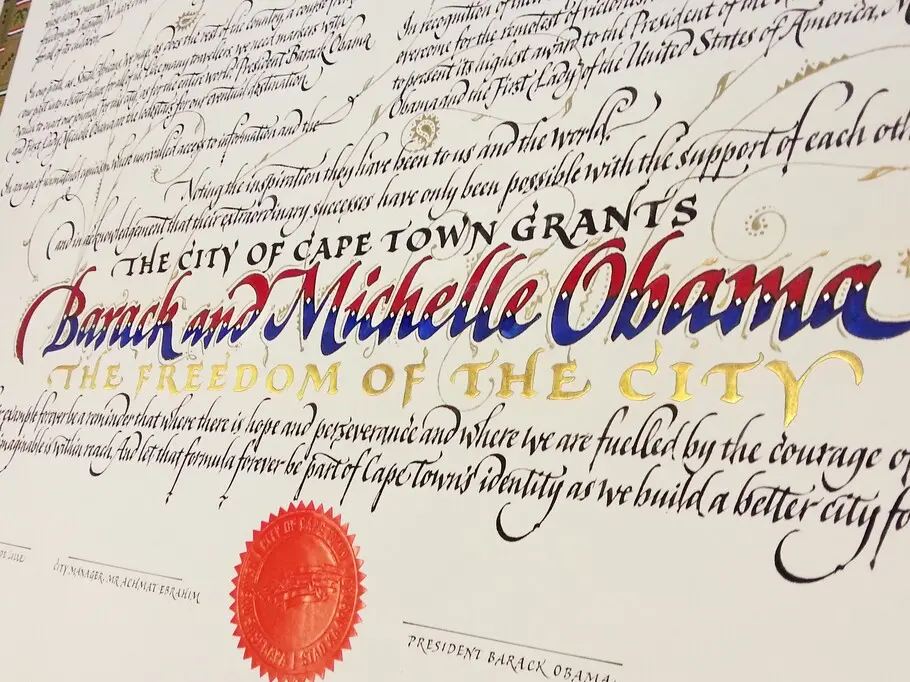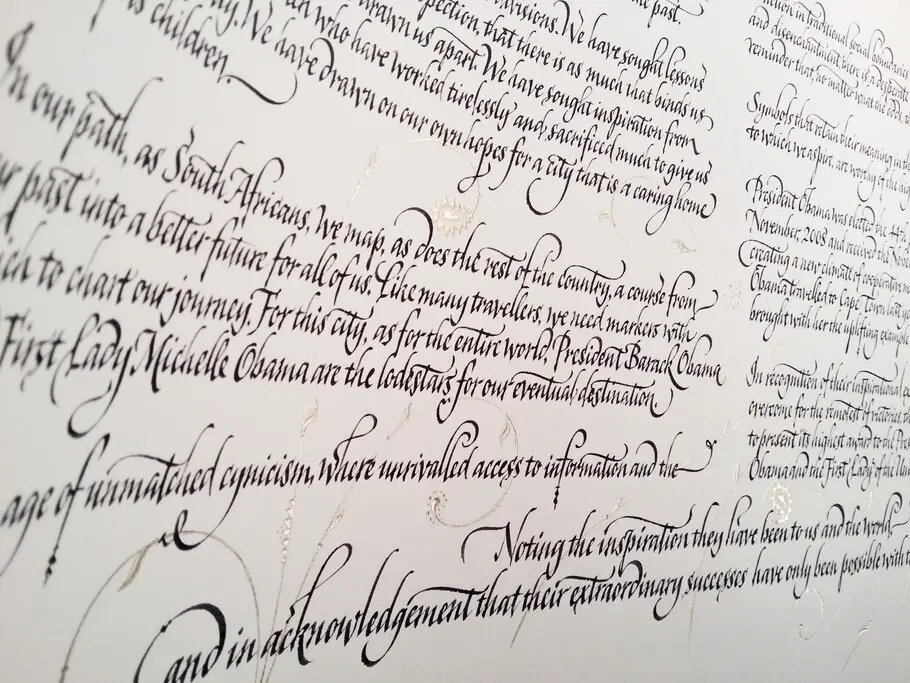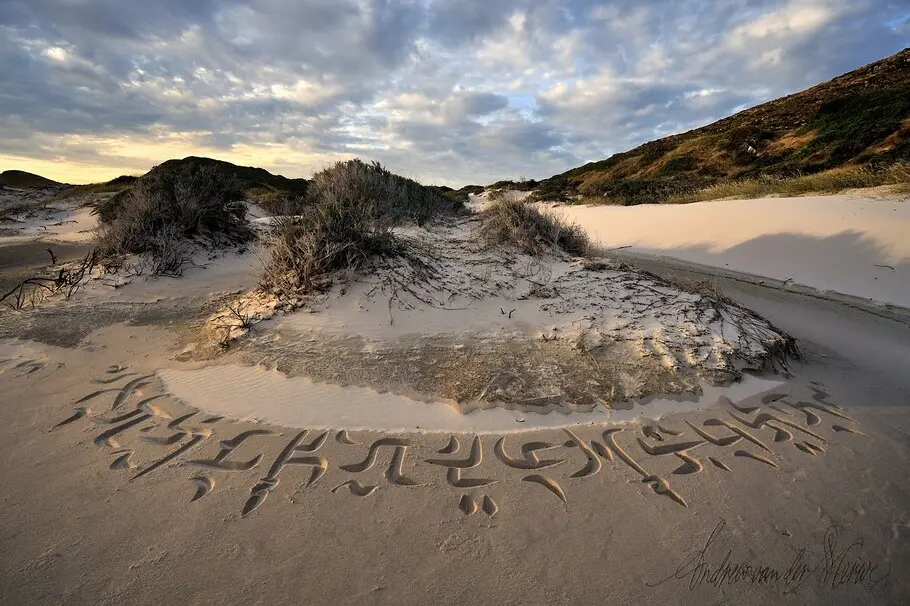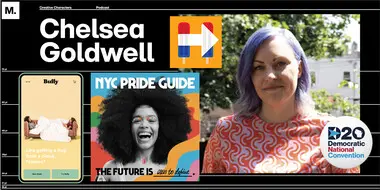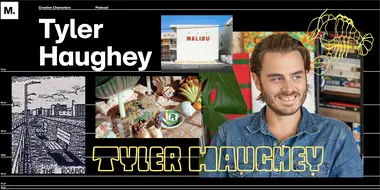Creative Characters S2 E1: Andrew van der Merwe - Ephemeral calligraphy from the beaches of South Africa.

Andrew van der Merwe.
In the first episode of Season 2, Carl Unger sits down with calligrapher, letter artist and “beachscriber,” Andrew van der Merwe from Cape Town, South Africa. They discuss the ephemeral nature of his work; how movement, philosophy and asemic writing play into his letterforms and creative process; and what led him to start carving calligraphy into his local beaches.
Van der Merwe is a calligrapher by trade but is completely self-taught. He recalls first being interested in lettering early in his life, around first grade. “Some of my very earliest memories are of the tactile feeling of the pencil going hard and soft over a grainy paper, and the effect of pressing hard and pressing soft to get thick and thin lines.”
At university, van der Merwe studied philosophy, politics, and economics, but his interest in calligraphy blossomed when he discovered Cape Friends of Calligraphy. He ended up dropping out during his last semester and began freelancing as a calligrapher. One day, at the beach, a chance meeting with a friend inspired his fascination with using the sand as his canvas.
“A friend of mine had seen me playing and writing on the beach and gave me a small pottery tool which consisted of a piece of flattened, looped wire at the end of a small handle,” van der Merwe recalls. “I immediately thought ‘that could make a cool mark on the sand,’ and it did, but it needed some adaptation to work for calligraphy.”
He made modifications to the tool and went back with a longer version of it and made some calligraphic marks. “There was this incredible poetic juxtaposition of having a mark that looked like it was done in stone but was completely ephemeral. It got washed away by the next wave. That captivated me and is probably the main impetus behind what followed with the beach calligraphy.”
After university, van der Merwe took freelance lettering jobs crafting bookmarks, invitations, wordmarks for artisanal wine and coffee companies, and so on, eventually working for ad and design agencies in Cape Town. Van der Merwe also lettered illuminated addresses for the City of Cape Town, for figures like Nelson Mandela and the Obamas when they visited the city. Cape Town’s thriving movie industry provided him with work on movie props, where he was tasked with learning to imitate the hand of famous historic characters like Martin Luther or to write in ancient Phoenician and ancient Greek, portraying calligraphy across a host of historical eras.
Van der Merwe notes the main difference between lettering and calligraphy is the role of movement. “With calligraphy, an arced stroke comes from an arcing movement. A straight line comes from a particular way that you pivot your hand and your arm. I can draw a ruler-straight line freehand even with my eyes closed just simply by feeling the swing of my arm right with my pen in it.”
With beach calligraphy, movement is even more integral, but there are also unpredictable environmental elements at play. “You’ve got to actually cut through the sand in a swift manner that catches the sand up into the scoop and then dispose of that sand, so it looks like it’s carved in stone.”
Those same elements, the sounds, sunlight, and tides, are what make this format so special. “A carved mark has a tiny ridge running around its edge. When the sun is low, you have the whole letter in shadow, but that tiny ridge is glowing in the sun. A cut that has water seeping into it from below becomes illuminated by the reflected light from the sky. If the wind blows on it, you get miniature ripples running through the letters and dry sand falling into it. The wind affecting letters carved among dunes often look so much more beautiful than when they’re fresh and raw. That’s very much part of the intoxication of it.”
Van der Merwe has had countless visitors approach him while he’s working on the beach and ask, “why are you doing this? don’t you know that the tide’s coming in?” The ephemeral nature of the work is what has been most valuable to him. “It’s been extremely valuable and very meaningful to me as a calligrapher because it’s taught me to value the process over the end result… The ocean gives you a clean slate, an opportunity to try again.”
Van der Merwe compares the process of beach calligraphy to the process of seeking the virtue of detachment when Tibetan monks painstakingly construct mandalas with colored sand that they immediately destroy upon completion.
He toured the West Coast of the United States in 2019 presenting tandem indoor workshops focusing on movement in calligraphy and beach calligraphy workshops. “I have also had opportunities here in South Africa to run mark-making workshops, both for adults and for children. The emphasis there is not on calligraphy, but on discovering what the beach can give to you if you just touch it right.”
Van der Merwe looks at beach calligraphy as a transferrable skill: understanding how the sand reacts to movement and different tools helps kids (and adults) learn how to be creative and imaginative and less focused on the final product. “I’ve introduced tools to the children on the beach and seen the spark catch on and seen them run with it and discover a whole new way of expressing of themselves.”
They close the episode by discussing a mysterious topic — how are there never any footprints in van der Merwe’s beach calligraphy photos? Go ahead and investigate van der Merwe’s work on social media to discover how he avoids prints in his photos (and no, they’re not Photoshopped).












